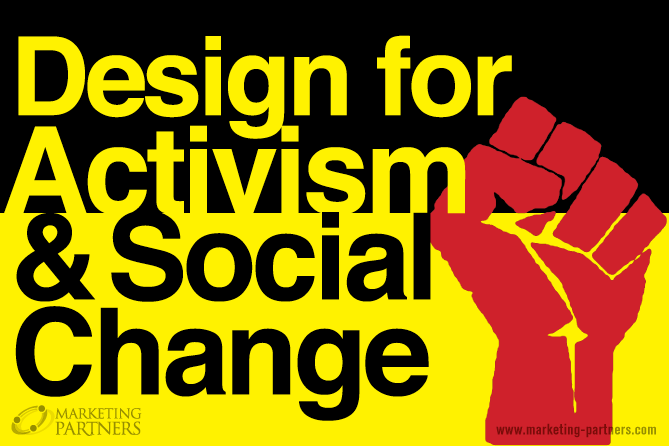How to Use Your Core Values to Inspire, Retain, and Energize Your Team
For the last few decades, but especially so in recent years, people are seeking out more than just an income from their place of employment. More...


Whether you are marketing a product to improve the environment using triple bottom line principles, working on a campaign to increase awareness of your socially responsible community service organization, or rallying support for your ideas for change using grass roots activism, impactful design will play a critical role in your success.
Powerful images and strong statements evoke emotional reactions and motivate people to think and act. Give your message a strong presence and your cause will have a recognizable visual focus that can bring people together behind a common cause. We are always stronger when we work together. Using compelling imagery and design has a long history of successfully uniting people—they respond to the universal language of color, shape, line, pattern, form.
Here are some familiar examples of symbols and graphics used in movements for social change:

Here are some examples of distinctive logos or wordmarks of organizations that promote social justice, equality and human rights:

And some examples of graphic identities created for environmental activist or conservation organizations:

In addition to the way activist marks are designed, successful activist campaign designs use clean layout, strong, hard-hitting typography and emotionally-charged, attention-getting imagery to start the conversation for change:

“Design activism is about using the incredible power of visual communication as a tool for making positive transformation in our world – specifically by raising the voices of individuals & groups that would be normally overlooked in our current communications din.”
—Noah Scalin, co-author, The Design Activist’s Handbook
“In an ideal world, all design would be socially conscious design. You’d feel good about the products, brands and messages that you’re promoting with your design talent. I think looking at socially conscious design or design activism as separate or other limits the potential.”
—Michelle Taute, co-author, The Design Activist’s Handbook
“In truth, anyone can be a design activist. It just starts with a commitment to yourself and your values. A commitment to making conscious choices and realizing how all those decisions you make as a graphic designer affect other people and the planet.”
—The Design Activist’s Handbook
“Activists act on the idea of shaping a better society, and designers can have a strong role in shaping our visions for that better society”
—Anne Thorpe, author, Design as Activism: to resist or to generate?
"What we're trying to do is pioneer a new form of social activism using all the power of the mass media to sell ideas, rather than products. We're motivated by a kind of 'greenthink' that comes from the environmental movement and isn't mired in the old ideology of the left and right. Instead, we take the environmental ethic into the mental ethic, trying to clean up the toxic areas of our minds. You can't recycle and be a good environmental citizen, then watch four hours of television and get consumption messages pumped at you."
— Kalle Lasn, co-founder of Adbusters
http://current.ecuad.ca/design-as-activism-to-resist-or-to-generate
http://www.printmag.com/featured/design-activism/
http://tmagazine.blogs.nytimes.com/2010/04/07/graphic-content-the-designer-as-activist/?_r=0
http://www.aiga.org/culturestrike-design-activism-to-impact-immigration-reform
The Change Conversations blog is where changemakers find inspiration and insights on the power of mission-driven communication to create the change you want to see.
© 2009- to present, Marketing Partners, Inc. Content on the Change Conversations blog is licensed under a Creative Commons Attribution-Noncommercial-NoDerivs 3.0 United States License to share as much as you like. Please attribute to Change Conversations and link to ChangeConversations.
Creative Commons License may not apply to images used within posts and pages on this website. See hover-over or links for attribution associated with each image and licensing information.

For the last few decades, but especially so in recent years, people are seeking out more than just an income from their place of employment. More...

You know nonprofit organizations need websites just as small businesses do, but you may be surprised to learn nonprofit sites can be more complex and...

In today’s rapidly evolving media landscape, understanding where and how your story is told isn’t just strategic—it’s essential. How you communicate...